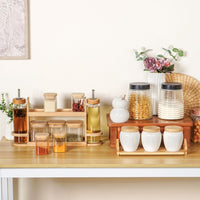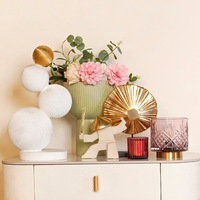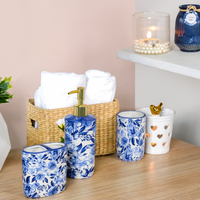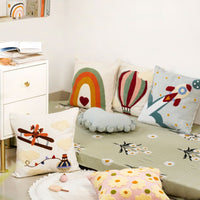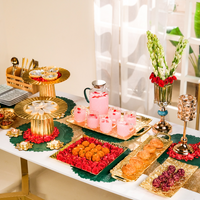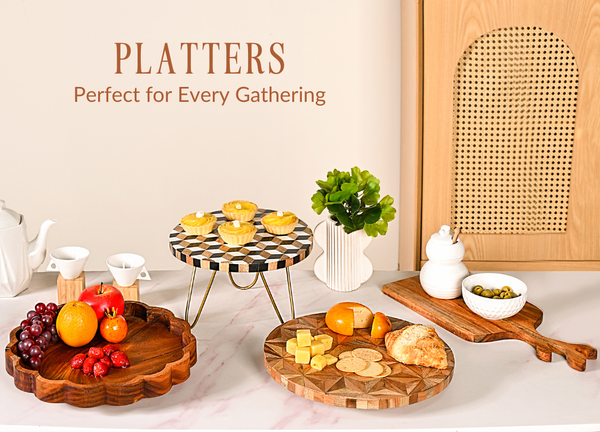In today’s fast-paced world driven by technology, a competitive market, and a sprawling urban jungle that can sometimes feel a bit overwhelming, our homes are the only place we have to turn to. This space is the only chance to replenish our mind, body, and soul. A well-designed home goes way beyond mere aesthetics; it completely changes our mood, the way we think, compartmentalize our emotions, and, lastly, has a great effect on our mental health in the long run. Many architecture and interior design enthusiasts are turning to science to come up with just the right spatial arrangement, symmetry, colour palette, and design elements to help curate a space that contributes to the psychological well-being of its occupants. Let’s together create a home that fosters comfort, peace of mind, and, above all, an improved state of living.
7 Tips To Design A Home For Well-Being
1. Abundant Sunlight

While you might have all-time access to your watch or wall clock, what about your body? How do you signal your body to regulate its sleep-wake cycle? With ample sunlight, you can. Time and again, several studies have revealed that healthy exposure to sunlight can be greatly beneficial to your circadian rhythm, boosting cortisol to promote wakefulness and heightened awareness, and amping up your melatonin levels to induce a better quality of sleep. Here’s how you can do it:
i) Open floor plans are great for distributing natural light throughout the home.
ii) You can install large French windows in high-activity areas such as your living room or dining room.
iii) Instead of heavy blackout curtains, go for light sheer drapes or blinds to let the sunlight peer through.
iv) Strategically use mirrors to reflect sunlight into relatively darker areas of the room.
v) Select neutral and toned-down shades for your walls to let the light bounce around the room and make the space appear brighter.
2. Vastu Shastra

While some might write off Vastu Shastra as merely superstitious, it is grounded in ancient literature. It lays out the foundations of spatial arrangement and symmetry based on some really well-thought principles. By taking cues from Vastu Shastra, you can turn your surroundings into a happier and more balanced environment. Here are some Vastu tips you need to pen down:
Entrance
i) Situating the main door in the east, north, or northeast direction is considered highly auspicious. This is to channel the goodness of solar energy as the sun rises in the east and remains in the north throughout the day.
ii) Vastu recommends using wooden doors for the entrance. The use of natural materials for the entrance door evokes warmth and harmony.
iii) A clearly visible nameplate on your front door brings good Vastu and contributes to a positive ambience.
iv) It is advisable to avoid placing shoe racks, old furniture, or dustbins near the entryway, as this can be quite unsightly and not the best to walk home to.
v) Adequate lighting in your entryway is a must. Contrary to dark and dingy spaces, this creates an inviting atmosphere for your guests.
Living Room
i) To make the most of solar influence, the living room should face the east, north, or northeast direction.
ii) Heavy furniture such as your couch or a lofty showcase should go in the west or southwest direction, while electronics such as your TV, sound system, or air purifier should ideally be placed in the southeast part.
iii) Artificial flowers work great when placed on a coffee table in the living room, symbolising vitality, youth, and joy.
iv) Placing a fish tank in the northeast corner of your living room is believed to bring good luck.
v) It is important to get rid of old and broken pieces such as photo frames, glasses, clocks, and others. Such items are believed to bring bad luck.
Bedroom
i) As per Vastu, the master bedroom should ideally be situated in the southwest corner.
ii) For proper ventilation and the influx of positive energies, the maximum number of windows should be situated in the east or northeast area of your bedroom.
iii) To promote enough air circulation around the bed, consider placing it in the centre instead of pushing it against a wall.
iv) Keep a vase of fresh flowers on your bedside table for some freshness.
v) Last but not least, position your dressing table mirror in such a manner that it does not reflect the bed.
3. Meditation Zone
Imagine you are on the side of a busy road full of traffic coming in from both directions. Each car that passes is a thought, a physical sensation or emotion. Now all you have to do is sit back and watch these thoughts pass. That’s right, folks! This is pretty much the basis of meditation, which makes you more comfortable with your thoughts and alleviates some of the unease.
Many proven studies have linked regular meditation with stress relief, lowered anxiety, and improved focus. A dedicated meditation zone works wonders for your mental and emotional health. Here’s how you can do it:
i) Invest in a soft rug and layer it with plush pillows. This will also help drown out excess background noise.
ii) Adorn your walls with inspirational wall art and similar accents to keep you going.
iii) Add some pops of colour with fresh flowers.
iv) Keep your meditation space spick and span to avoid visual distractions.
4. Greenery
Apart from drastically improving the air quality by reducing airborne volatile organic compounds, the science-backed benefits of indoor plants are many. Several studies have shown that plants are therapeutic, reduce stress, and strongly connect you with nature. Whether you are a seasoned plant parent or just embarking on this green adventure, plants are conducive to a serene and focused environment at home. Here’s how you do it:
i) Go for mini desk planters for succulents, shrubs, and small flowering plants.
ii) Larger varieties like Fiddle Leaf Fig, Areca Palm, and Philodendron can be housed in large floor planters and placed in the corner of your room.
iii) If maintaining fresh flowers and plants is a task, you can always go for faux flowers and vines.
5. Simple Colours

The science of colour theory is quite a fascinating one, and suggests that different colours evoke different emotions in individuals. Leveraging this to curate a home for your well-being is something that should definitely not be overlooked. Although your personal preferences can take precedence here, there are some pointers you should consider:
i) Consider the size of the room. Saturated colours and jewel tones are a strict no for small rooms. They’ll make your room feel more boxed-in and claustrophobic. Instead, opt for light colours and neutral colours for such rooms.
ii) If you are looking for a more intimate and private look, shoot for rich colours. This works well for larger spaces.
iii) A mix of neutral and bold colours bodes well for any room. This will keep the room from looking dull and washed out.
iv) Cool colours such as baby blue, sage green, and lavender are considered restful, making them perfect for creating a serene ambiance. You’d be amazed to know the science behind this. The eye directly focuses the colour green and its undertones directly on the retina, causing less strain on the eyes.
v) Warm colours like a cheery yellow or a nice orange can be very stimulating. This makes them great for inducing an upbeat and energetic vibe into your home.
6. Right Materials

Choosing the right materials is a crucial step towards creating a home that uplifts your mental and physical health. Wood, bamboo, and stone are devoid of harmful toxins and serve as sustainable additions to your home decor. Unlike run-of-the-mill plastics or white steel, these materials do not emit VOCs (volatile organic compounds). The plus side? These materials work remarkably well with Scandinavian minimalist styles.
7. Soundproofing

No one likes jarring machine noises and loud car honks. That being said, constant exposure to these noises have been linked to poor sleep quality, depression, and anxiety. Now, do you design your home to keep such noises at bay? Don’t worry, we’ve got you.
i) For private areas such as your bedroom, use thick blackout curtains to absorb sound and block it from entering your room.
ii) Carpeting and area rugs can also significantly dampen the amount of noise in your home.
iii) Strategic furniture placement is another clever way to keep down the noise. By placing lofty items such as bookshelves, showcases, or couches against the wall, you can get them to act as barriers and minimise sound reflection.
iv) Finally, double or triple-pane windows and solid-core doors nip the problem in the bud, keeping unwanted sounds from entering your room.
Conclusion
It can be truly surprising to know how home decor influences our mood, cognition, and mental health. Backed by science-baked facts and innovative tips, we’ve unveiled some major pointers to curate a space that promotes peace of mind, vitality, focus, and general well-being. From taking Vastu Shastra cues to acoustically treating your home, you can discover plenty of ideas to transform your space into a haven of serenity.


